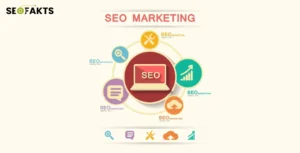In today’s fast-paced digital world, having a well-crafted digital marketing strategy is crucial for businesses aiming to grow their online presence and drive tangible results. A strategic approach not only helps in reaching your target audience effectively but also ensures a higher return on investment (ROI). In this comprehensive guide, we’ll explore the essential steps to developing a digital marketing strategy that delivers measurable outcomes.
Related blog How to Create a Social Media Strategy That Drives Results
1. Define Your Goals and Objectives
The first step in creating an effective digital marketing strategy is to define clear, measurable goals. What do you want to achieve with your digital marketing efforts? Your goals could range from increasing brand awareness and driving website traffic to generating leads and boosting sales.
Tips for Setting Goals:
- Use SMART Criteria: Ensure your goals are Specific, Measurable, Achievable, Relevant, and Time-bound. For example, instead of saying “increase website traffic,” set a goal like “increase website traffic by 30% over the next six months.”
- Align with Business Objectives: Your digital marketing goals should align with your broader business objectives to ensure consistency and direction across all marketing efforts.
2. Understand Your Target Audience
Knowing your audience is fundamental to the success of your digital marketing strategy. This involves researching and understanding your ideal customer’s demographics, behaviors, needs, and pain points.
Steps to Identify Your Target Audience:
- Conduct Market Research: Use surveys, focus groups, and customer feedback to gather data about your audience.
- Create Buyer Personas: Develop detailed profiles of your ideal customers based on demographics, interests, and behaviors.
- Analyze Competitors: Study your competitors to see who their target audience is and how they engage with them.
Related blog Top Graphic Design Trends to Watch in 2024
3. Perform a SWOT Analysis
A SWOT analysis (Strengths, Weaknesses, Opportunities, Threats) provides valuable insights into your business and helps you understand where you stand in the market.
How to Conduct a SWOT Analysis:
- Strengths: Identify what your business does well. This could be a unique product, excellent customer service, or a strong brand reputation.
- Weaknesses: Acknowledge areas where your business could improve. These might include a lack of digital presence, limited resources, or outdated technology.
- Opportunities: Look for external factors that could benefit your business. This could be an emerging trend, a new market, or advancements in technology.
- Threats: Recognize external factors that could pose challenges, such as competitors, market saturation, or economic downturns.
4. Choose Your Digital Marketing Channels
Selecting the right digital marketing channels is crucial to reaching your target audience effectively. Different channels serve different purposes, and it’s important to choose the ones that align with your goals and audience preferences.
Popular Digital Marketing Channels:
- Social Media Marketing: Platforms like Facebook, Instagram, Twitter, and LinkedIn are ideal for engaging with your audience, building brand awareness, and driving traffic.
- Search Engine Optimization (SEO): Optimizing your website for search engines helps increase organic traffic and visibility on search engine results pages (SERPs).
- Content Marketing: Creating valuable content, such as blogs, videos, and infographics, can attract and engage your target audience, establishing your brand as a thought leader in your industry.
- Email Marketing: A cost-effective way to nurture leads and keep your audience informed about your products, services, and promotions.
- Pay-Per-Click (PPC) Advertising: Paid advertising on platforms like Google Ads and social media allows you to reach a broader audience quickly and drive immediate traffic and conversions.
Related blog How to Write Engaging Blog Posts That Keep Readers Coming Back
5. Develop a Content Strategy
Content is at the heart of any digital marketing strategy. A well-thought-out content strategy ensures that you consistently deliver valuable and relevant content to your audience, helping to build trust and authority.
Components of a Content Strategy:
- Content Types: Decide on the types of content you will create, such as blog posts, videos, podcasts, infographics, and e-books.
- Content Calendar: Plan your content in advance with a content calendar. This helps ensure consistency and allows you to align your content with your marketing goals and campaigns.
- SEO Optimization: Incorporate SEO best practices into your content strategy to improve search engine rankings and drive organic traffic.
- Distribution Plan: Determine how you will distribute your content across different channels to maximize reach and engagement.
6. Set Your Budget
Determining your digital marketing budget is a critical step in the strategy development process. Your budget will influence the channels you choose, the tools you use, and the scale of your campaigns.
Considerations for Setting a Budget:
- Allocate Funds Based on Goals: Allocate your budget according to the goals you’ve set. For instance, if your primary goal is lead generation, you might allocate more funds to PPC advertising and email marketing.
- Consider Long-Term Investments: Some strategies, like SEO and content marketing, require time to show results but can provide substantial long-term benefits.
- Factor in Tools and Resources: Include costs for marketing tools, software, and any external resources or agencies you may need.
Related blog Unlocking the Secrets of Effective SEO: What You Need to Know
7. Implement and Monitor Your Strategy
Once you have developed your strategy, it’s time to implement it. This involves executing your plans across the chosen digital marketing channels and ensuring everything runs smoothly.
Best Practices for Implementation:
- Use Project Management Tools: Tools like Trello, Asana, or Monday.com can help you manage tasks, deadlines, and team collaboration.
- Monitor Performance Regularly: Use analytics tools like Google Analytics, social media insights, and email marketing reports to monitor the performance of your campaigns.
- Stay Flexible: Be prepared to make adjustments based on performance data. Digital marketing is dynamic, and being adaptable is key to success.
8. Measure Results and Optimize
The final step in developing a digital marketing strategy is measuring your results against your goals. This allows you to understand what’s working and what isn’t, so you can make data-driven decisions to optimize your strategy.
Key Metrics to Track:
- Traffic and Engagement: Monitor website traffic, page views, bounce rates, and time on site to gauge audience engagement.
- Conversion Rates: Track conversions, such as form submissions, downloads, or purchases, to measure the effectiveness of your campaigns.
- ROI: Calculate the return on investment for each marketing channel to determine the most cost-effective strategies.
- Customer Feedback: Gather feedback from your audience to understand their needs and preferences better and improve your offerings.
Related blog Top 10 Web Design Trends for 2024 – What’s New and What’s Next
Conclusion
Developing a digital marketing strategy that drives results requires careful planning, continuous monitoring, and a willingness to adapt. By following these steps, you can create a strategy that not only aligns with your business goals but also engages your target audience, builds brand authority, and drives sustainable growth. Remember, digital marketing is an ongoing process, and staying up-to-date with the latest trends and best practices will help you stay ahead of the competition.





